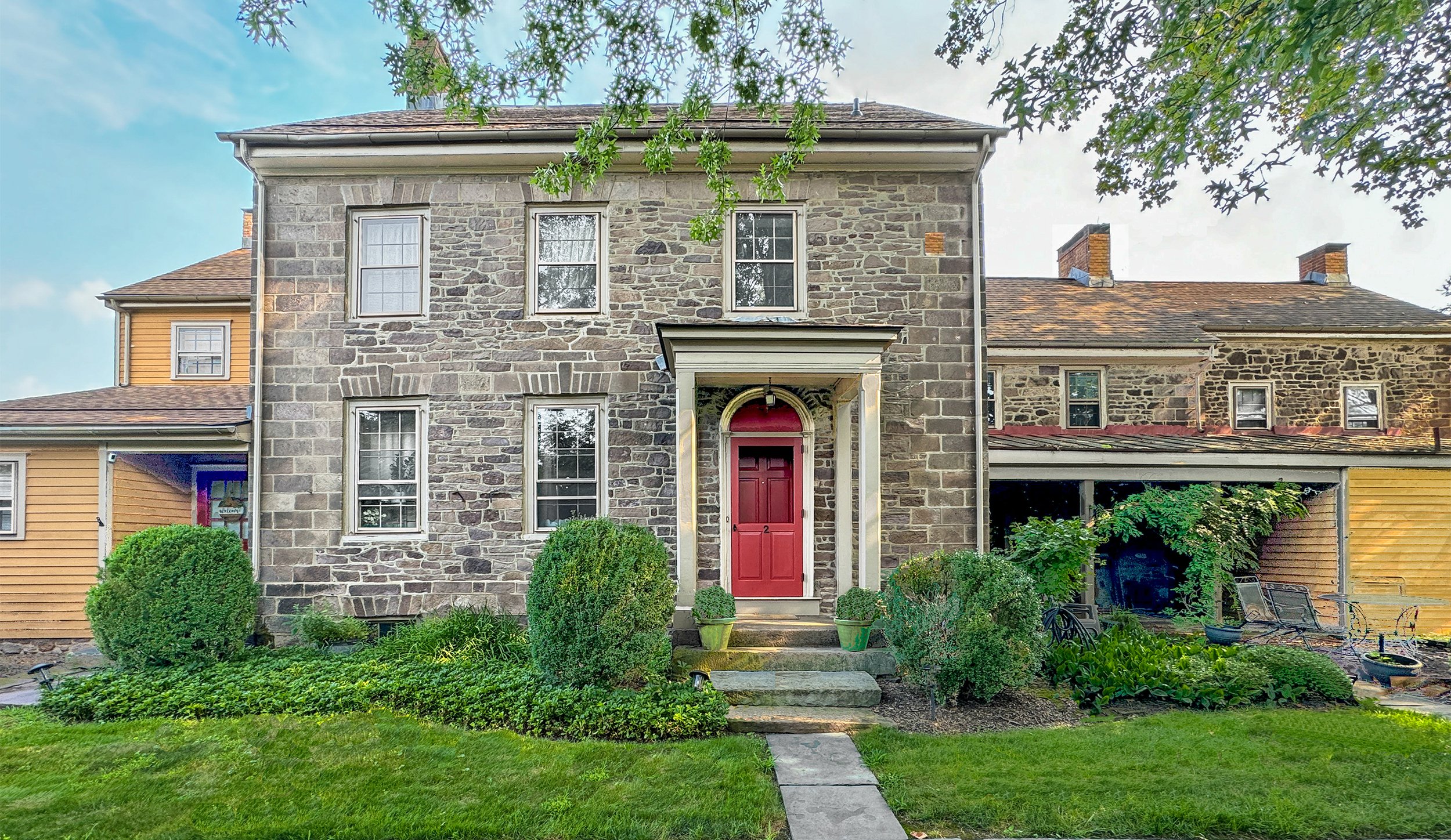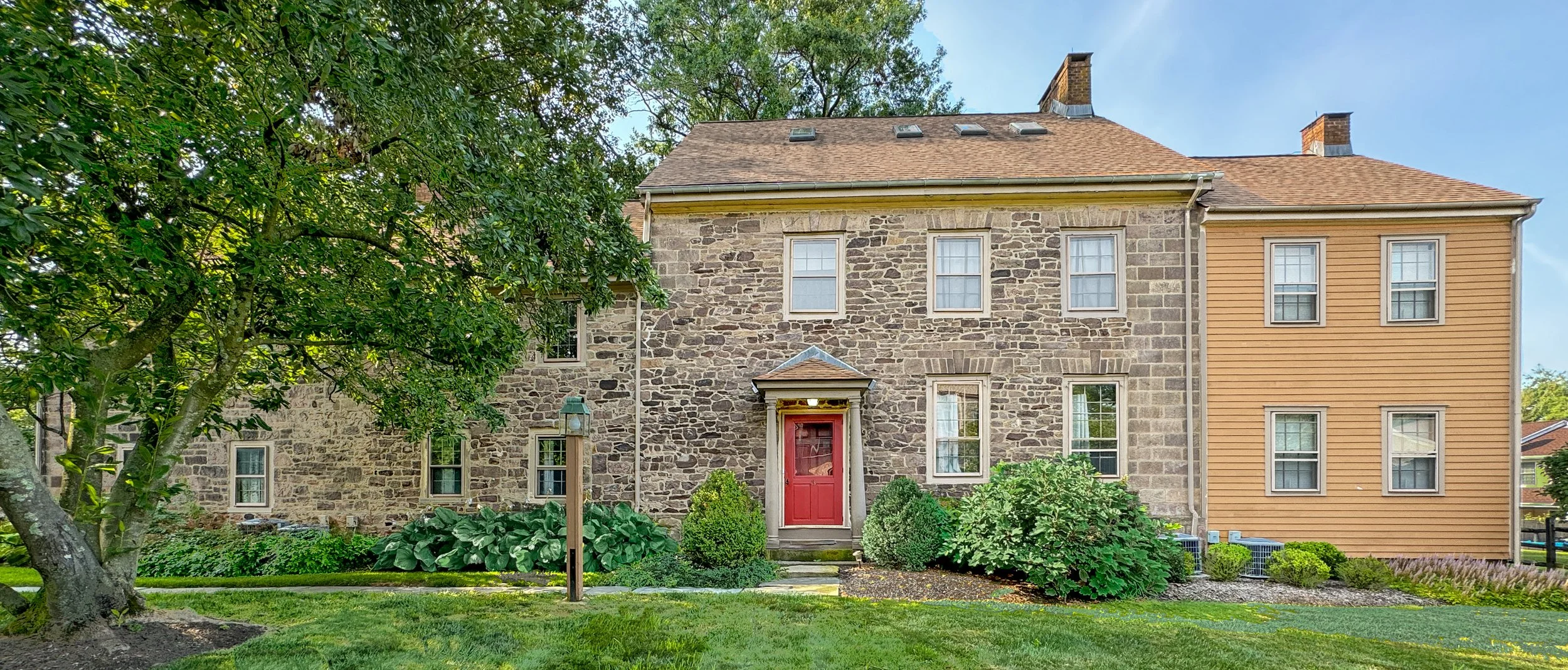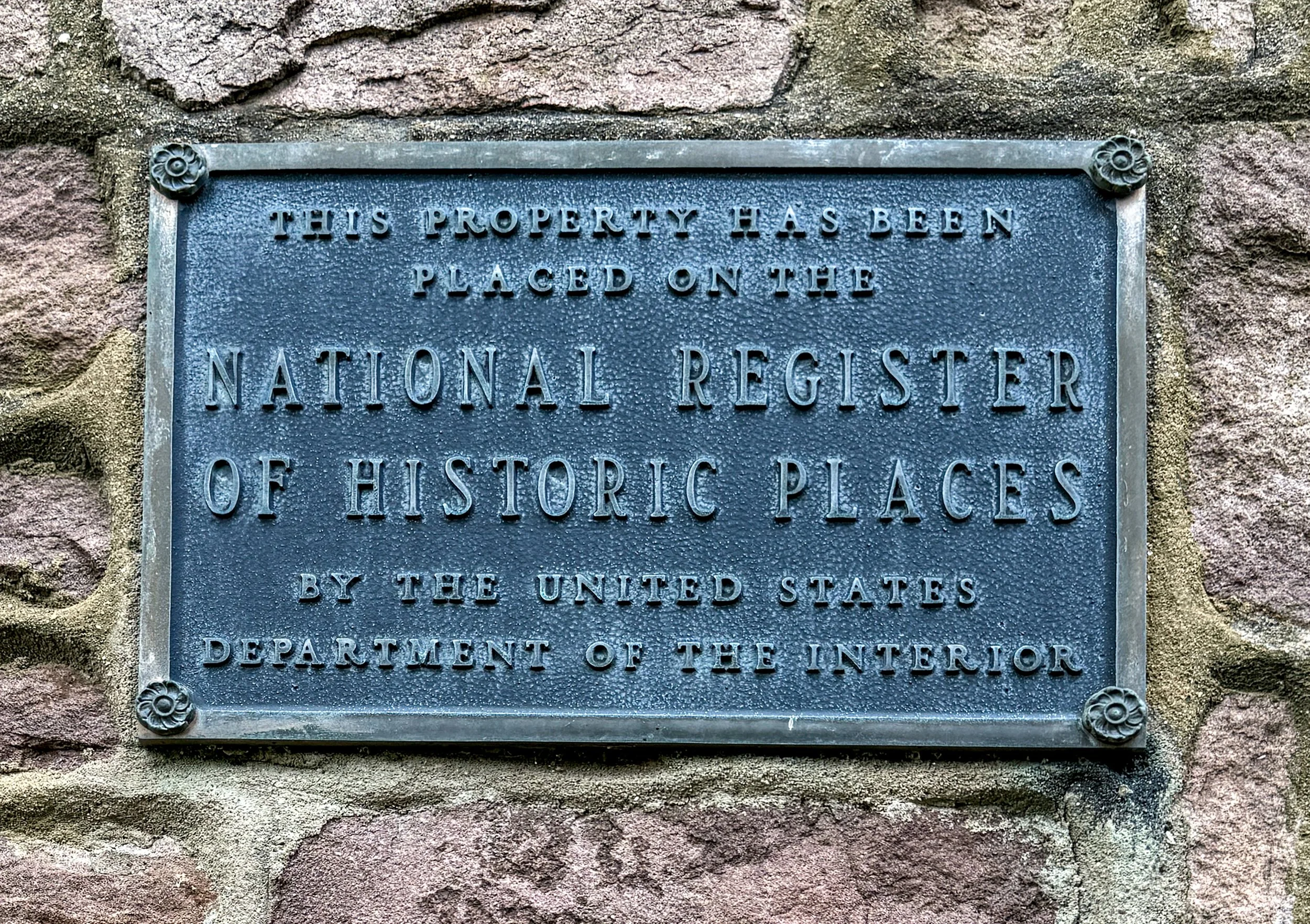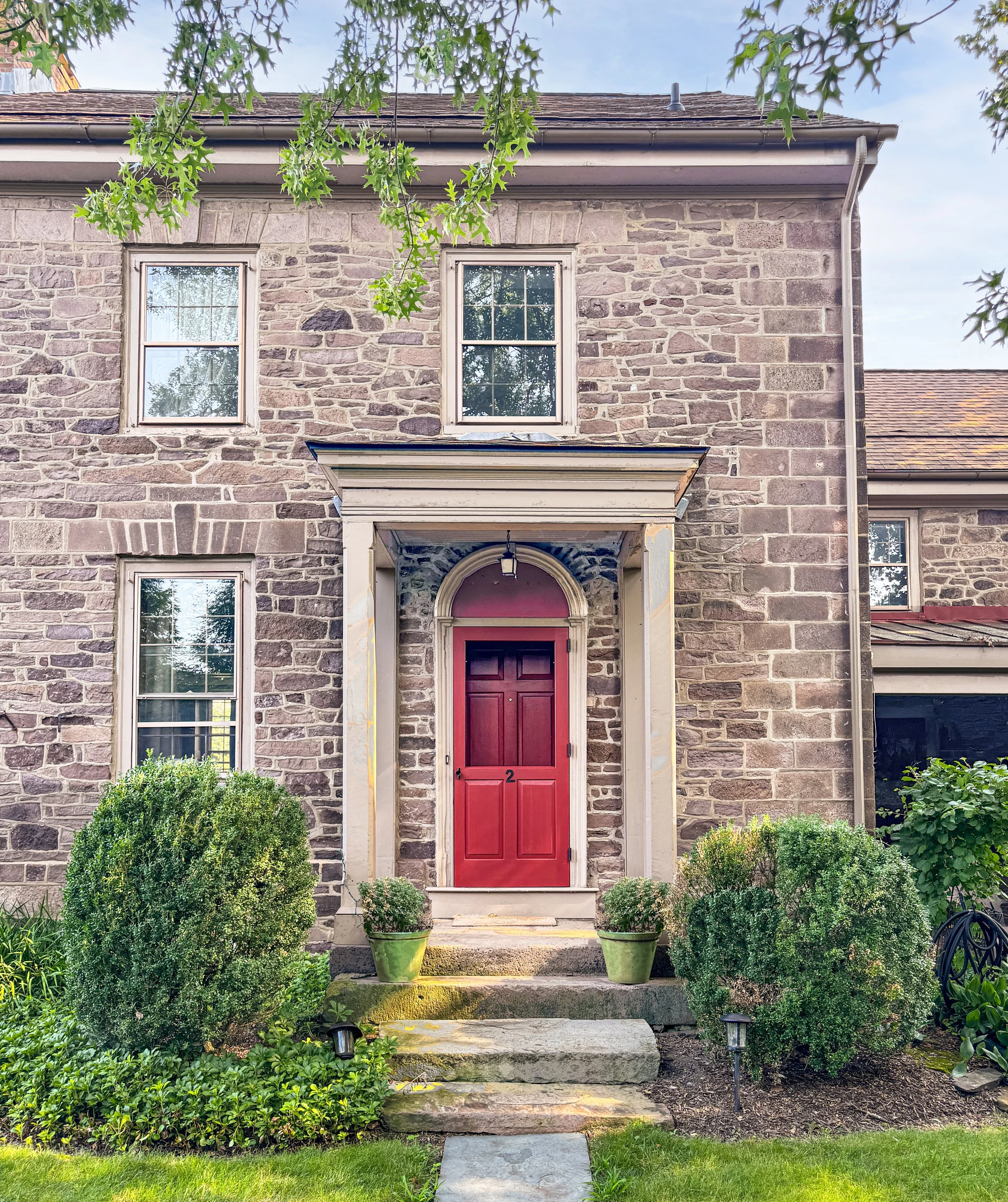The Leedom Farm
Painted by Quaker Artist Edward Hicks
Bucks County
Above: Leedom Farm, 1849, Edward Hicks. Image source: Colonial Williamsburg
Edward Hicks created this painting for his stepbrother, David Leedom. Among the figures in the farm scene are members of the Leedom family, including Mary Twining Leedom, Hicks’s beloved foster sister. Also included is her husband, Jesse Leedom, shown watching over a peaceful barnyard.
The Leedom painting “…is the summation of its predecessors, combining the artist’s remarkable skill, his love of family and friends, and his innate Quaker values for order, simplicity and man’s good works on earth. In short, this painting is a highly personal statement about the serenity Hicks so fervently desired for humanity.” Quote: Colonial Williamsburg
The Leedom Farmhouse:
Above: The Leedom farmhouse, front elevation. Image source: Lee J. Stoltzfus
The house developed in several stages. The earliest section dates to the late 18th century. Later that century, a large 2½-story stone addition was built (on right, above). In 1802, the largest wing was added, sometimes described as the mansion wing (in center, above). Finally, a two-story frame addition was constructed in the early 19th century (on left, above).
The Leedom Farm painting was commissioned by David Leedom, the son of Mary Twining whom Hicks depicted in his Twining Farm painting. Mary (Twining) Leedom was the daughter of Hicks’ foster parents. The painting reflects the artist’s affection for his foster family and their relatives.
Rear View of the Leedom Farmhouse:
Above: The Leedom farmhouse, rear elevation. Image source: Lee J. Stoltzfus
Listed on the National Register of Historic Places. Image source: Lee J. Stoltzfus
Entry to the 1802 addition of the farmhouse. Image source: Lee J. Stoltzfus
The Luminous Light at the Leedom Farm,
The Quaker Inner Light:
Above: Detail of Leedom Farm, 1849, Edward Hicks. Image source: Colonial Williamsburg
Edward Hicks painted this farmscape at age 69, just months before his death. The work reflects his enduring Quaker ideals of quietism. The painting is his final masterpiece.
The world was all light to him [Edward Hicks], that special Light. He depicted it again in his last painting of David Leedom’s farm, where half the painting is luminous sky. The immaculately rendered bulls, sheep, pigs, fences, barns, and people (living or deceased) are saturated in it. No, they are giving it off, being full of that spirituality, in abundance. It is as if the world is made of diamonds. No, it is made of one diamond. Quote: Friends Journal, John Brzostoski
Links:






